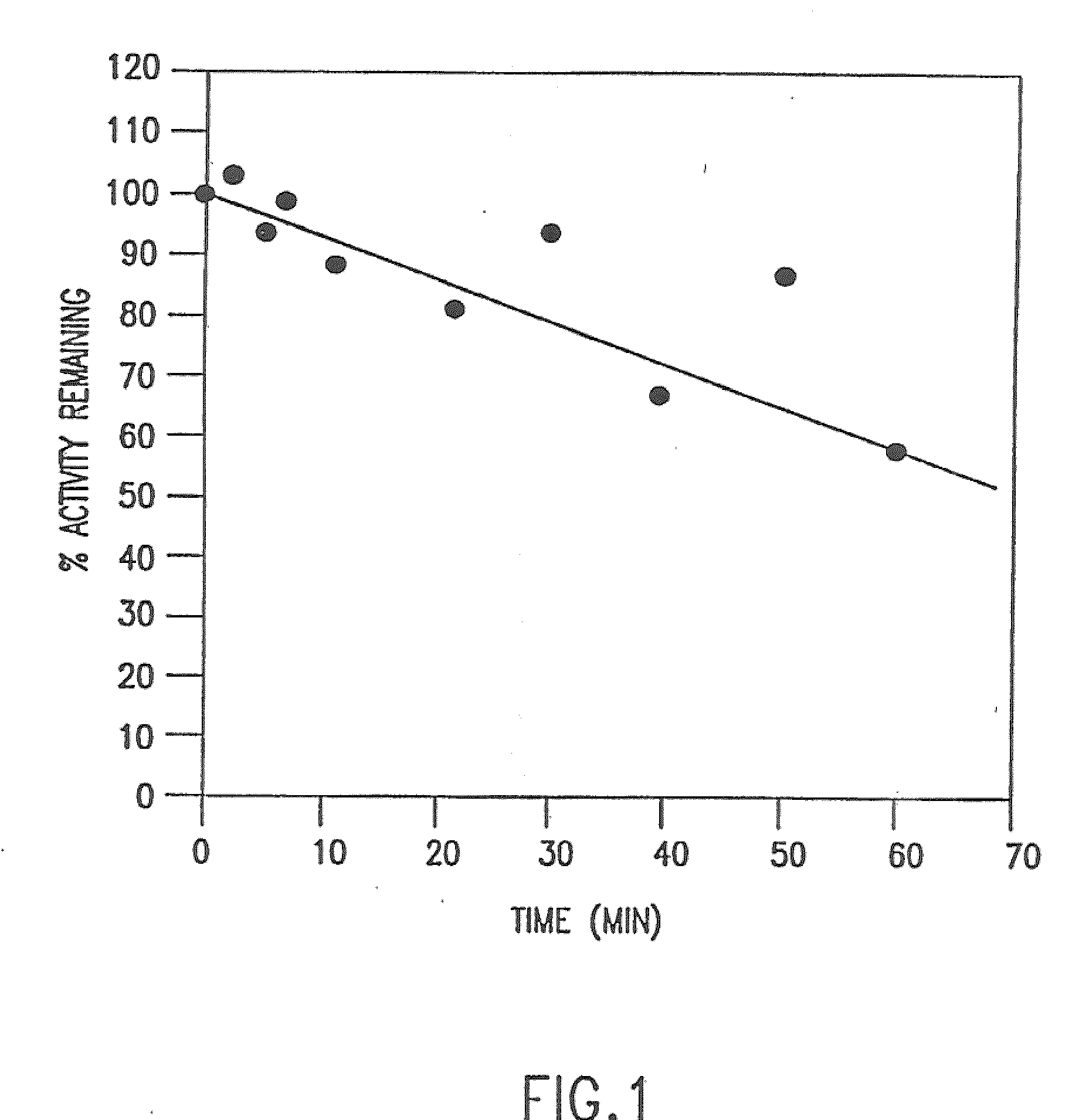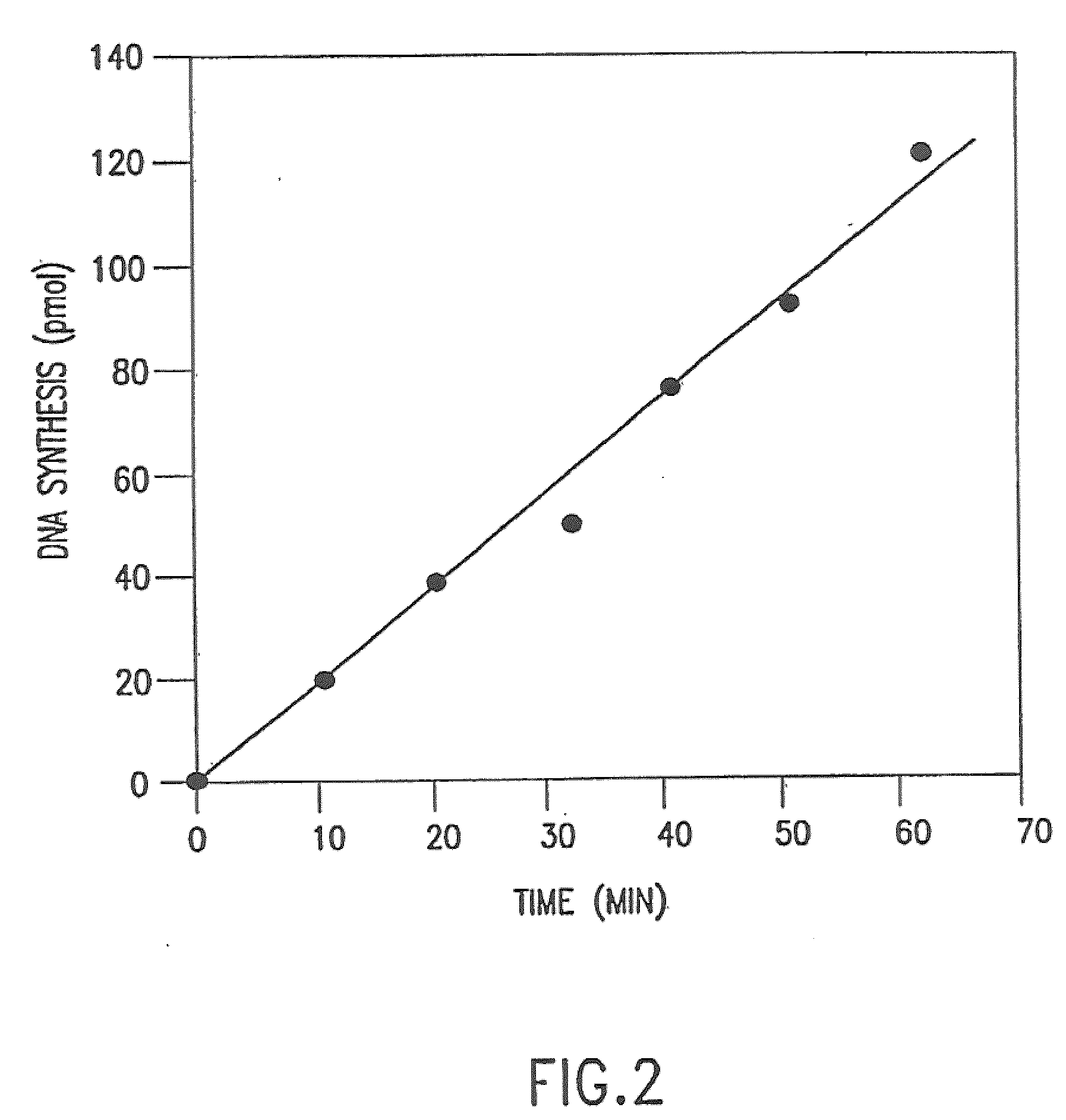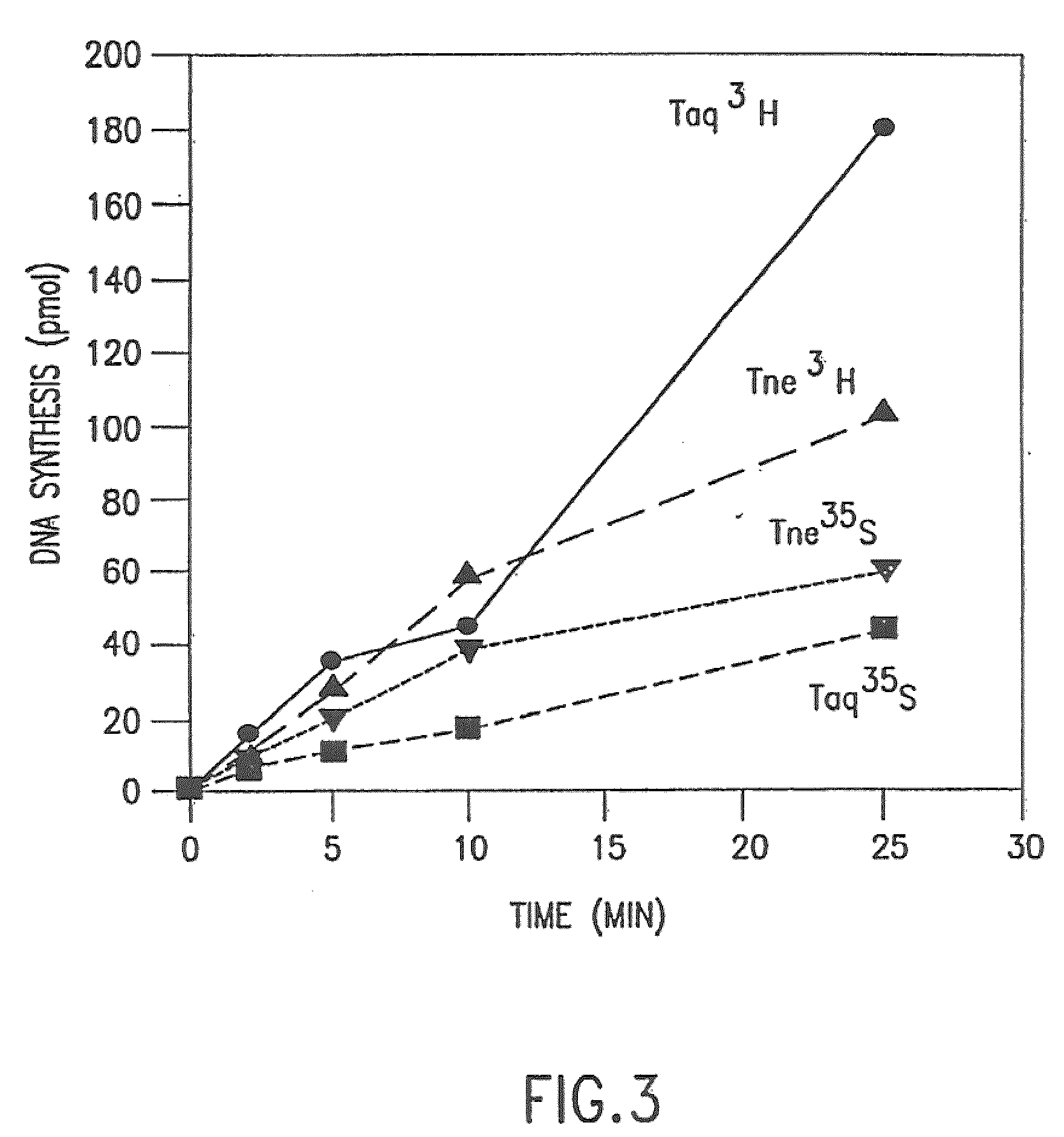Cloned DNA polymerases from thermotoga and mutants thereof
a dna polymerase and thermotoga technology, applied in the field of cloned dna polymerases from thermotoga and mutants thereof, can solve the problem that relatively little investigation has been done to isolate and even clone these enzymes, and achieve the effect of reducing or eliminating the 5′-3′ exonuclease activity of the polymerase, reducing or eliminating discriminatory behavior
- Summary
- Abstract
- Description
- Claims
- Application Information
AI Technical Summary
Benefits of technology
Problems solved by technology
Method used
Image
Examples
example 1
Bacterial Strains And Growth Conditions
[0151]Thermotoga neapolitana DSM No. 5068 was grown under anaerobic conditions as described in the DSM catalog (addition of resazurin, Na2S, and sulfur granules while sparging the media with nitrogen) at 85° C. in an oil bath from 12 to 24 hours. The cells were harvested by filtering the broth through Whatman #1 filter paper. The supernatant was collected in an ice bath and then centrifuged in a refrigerated centrifuge at 8,000 rpms for twenty minutes. The cell paste was stored at −70° C. prior to total genomic DNA isolation.
[0152]E. coli strains were grown in 2×LB broth base (Lennox L broth base: GIBCO / BRL) medium. Transformed cells were incubated in SOC (2% tryptone, 0.5% yeast extract, yeast 10 mM NaCl, 2.5 mM KCl, 20 mM glucose, 10 mM MgCl2, and 10 mM MgSO4 per liter) before plating. When appropriate antibiotic supplements were 20 mg / l tetracycline and 100 mg / l ampicillin. E. coli strain DH10B (Lorow et al., Focus 12:19-20 (1990)) was used ...
example 2
DNA Isolation
[0153]Thermotoga neapolitana chromosomal DNA was isolated from 1.1 g of cells by suspending the cells in 2.5 ml TNE (50 mM Tris-HCl, pH 8.0, 50 mM NaCl, 10 mM EDTA) and treated with 1% SDS for 10 minutes at 37° C. DNA was extracted with phenol by gently rocking the lysed cells overnight at 4° C. The next day, the lysed cells were extracted with chloroform:isoamyl alcohol. The resulting chromosomal DNA was further purified by centrifugation in a CsCl density gradient. Chromosomal DNA isolated from the density gradient was extracted three times with isopropanol and dialyzed overnight against a buffer containing 10 mM Tris-HCl (pH 8.0) and 1 mM EDTA (TE).
example 3
Construction of Genomic Libraries
[0154]The chromosomal DNA isolated in Example 2 was used to construct a genomic library in the plasmid pCP13. Briefly, 10 tubes each containing 10 μg of Thermotoga neapolitana chromosomal DNA was digested with 0.01 to 10 units of Sau3Al for 1 hour at 37° C. A portion of the digested DNA was tested in an agarose (1.2%) gel to determine the extent of digestion. Samples with less than 50% digestion were pooled, ethanol precipitated and dissolved in TE. 6.5 μg of partially digested chromosomal DNA was ligated into 1.5 μg of pCP13 cosmid which had been digested with BamHI restriction endonuclease and dephosphorylated with calf intestinal alkaline phosphatase. Ligation of the partially digested Thermotoga DNA and BamHI cleaved pCP13 was carried out with T4 DNA ligase at 22° C. for 16 hours. After ligation, about 1 μg of ligated DNA was packaged using λ-packaging extract (obtained from Life Technologies, Inc., Gaithersburg, Md.). DH10B cells (Life Tech. Inc...
PUM
| Property | Measurement | Unit |
|---|---|---|
| molecular weight | aaaaa | aaaaa |
| molecular weight | aaaaa | aaaaa |
| molecular weight | aaaaa | aaaaa |
Abstract
Description
Claims
Application Information
 Login to View More
Login to View More - R&D
- Intellectual Property
- Life Sciences
- Materials
- Tech Scout
- Unparalleled Data Quality
- Higher Quality Content
- 60% Fewer Hallucinations
Browse by: Latest US Patents, China's latest patents, Technical Efficacy Thesaurus, Application Domain, Technology Topic, Popular Technical Reports.
© 2025 PatSnap. All rights reserved.Legal|Privacy policy|Modern Slavery Act Transparency Statement|Sitemap|About US| Contact US: help@patsnap.com



